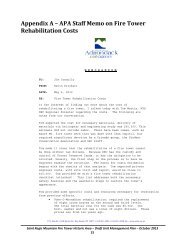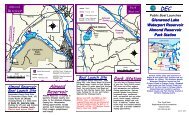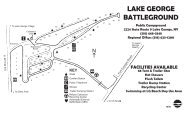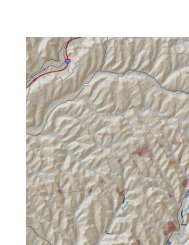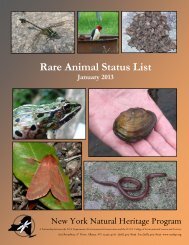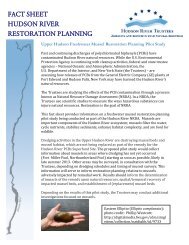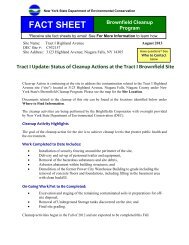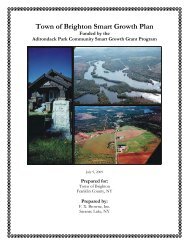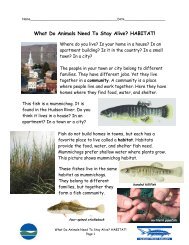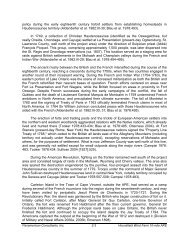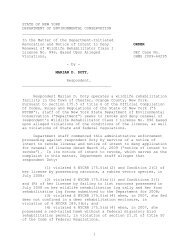2012-2013 Hunting & Trapping Regulations Guide - New York State ...
2012-2013 Hunting & Trapping Regulations Guide - New York State ...
2012-2013 Hunting & Trapping Regulations Guide - New York State ...
You also want an ePaper? Increase the reach of your titles
YUMPU automatically turns print PDFs into web optimized ePapers that Google loves.
"non-leaD:<br />
Good for hunting;<br />
good for high quality venison;<br />
good for conservation."<br />
Traditional muzzleloading bullets travel slower than high-speed rifle<br />
ammo, and remain largely intact when shot at big game. This means there is<br />
less risk of lead fragments being eaten by scavenging wildlife.<br />
The picture is from 2010, NY#68 Pond Eddy<br />
(Delaware River), taken February 22 while they<br />
were setting up for the breeding season. They<br />
were successful in fledging one young. The photo<br />
was taken by Scott Rando, a long-time volunteer.<br />
200<br />
175<br />
150<br />
125<br />
100<br />
75<br />
50<br />
25<br />
0<br />
Gordon Batcheller is a 32 year veteran of DEC and <strong>New</strong> <strong>York</strong>’s Chief Wildlife<br />
Biologist. He is also an avid deer hunter.<br />
© Andreykuzmin | Dreamstime.com<br />
Lead bullets begin breaking apart as soon as they enter a deer. The bullet<br />
fragments reduce the amount of clean venison available to hunters, and<br />
increase the chances that scavenging wildlife, including bald eagles, may<br />
eat lead and get sick when they feed on the gut pile or find a wounded deer.<br />
1990 1992 1994 1996 1998 2000 2002 2004 2006 2008 2010<br />
Bald eagles have recovered in <strong>New</strong> <strong>York</strong>, and their population continues to grow. However, since<br />
2010, DEC examined 14 eagles that died of lead poisoning after eating lead ammo fragments. Hunters<br />
who choose to switch to the new high tech bullets and slugs will know that they are not contributing to<br />
the potential death of our national bird.<br />
<strong>2012</strong>–13 <strong>Hunting</strong> & <strong>Trapping</strong> <strong>Guide</strong> 37<br />
Image courtesy of the Minnesota Department of Natural Resources



